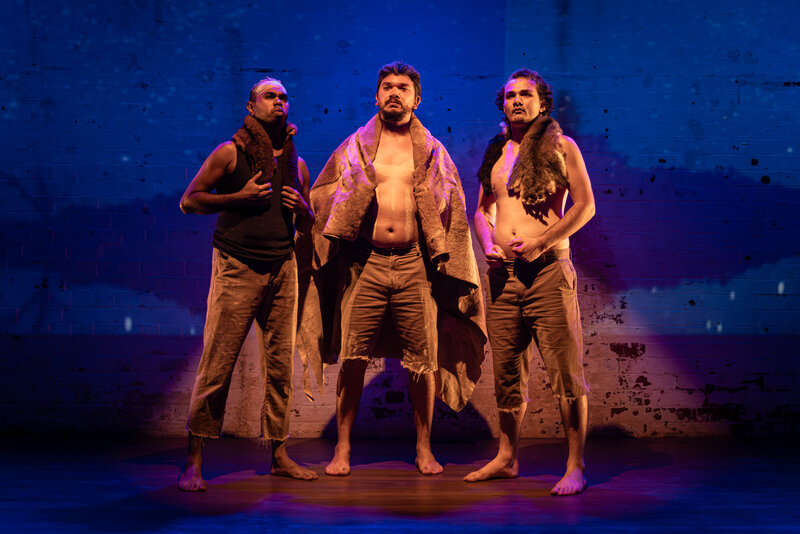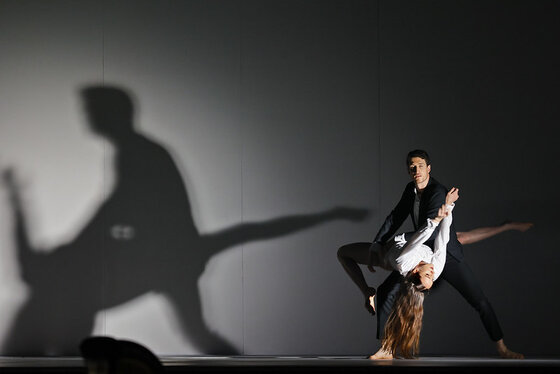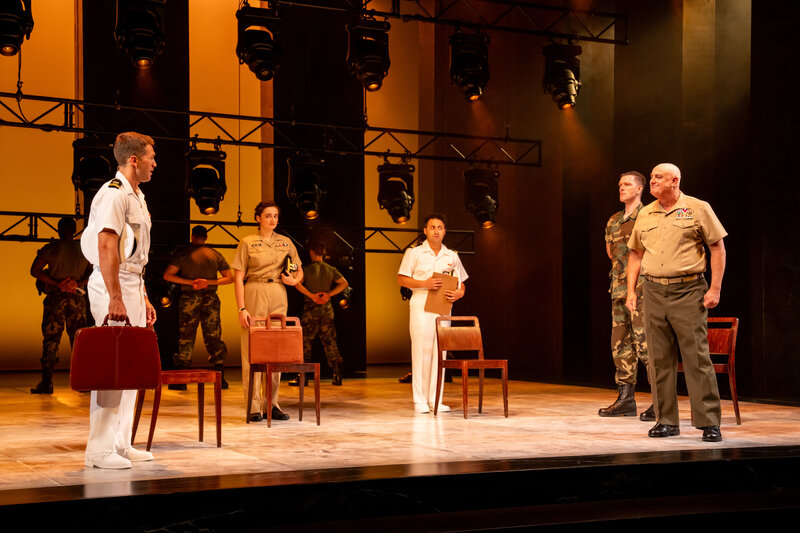A light, lively and joyous family friendly production of Mozart’s final opera before his passing, The Magic Flute is a cavalcade of fun and treachery. For me, four characters turned the beloved opera into something special. Foremost among them was Andrew Moran’s quintessential, knockabout Aussie representation of the bird catcher, Papageno. From the moment he appeared on stage and spoke his first words and opening his lungs to reveal his magnificent baritone voice, he had me. It was a really memorable performance – cavalier and comedic. I loved it. So, too, the flirtatious floosies that filled the roles of the servants of the wicked Queen of the Night. They fuss and fawn over Prince Tamino’s prostrate form, extolling his virtues. In fact, collectively the four set the tone for a story in which both the Prince and Papageno must prove they are worthy of true love by tackling dangerous challenges.

Sun King Sarastro is in an eternal war with the Queen of the Night. Their daughter, Pamina, is at the centre of their conflict. Sarastro is shielding Pamina, trying to protect her against the evil influence of her mother. The Queen wants to trick the Prince into “rescuing” Pamina. When he sees a photo of Pamina, he is immediately besotted. He encounters tall tale teller Papageno, who would like nothing more than to find a partner in life. So it is that the pair embarks on a grand adventure that could end in disaster or see both their hearts full.
Even though this is an English language version of The Magic Flute, it retains its uniquely German style, which is known as Singspiel. That refers to a combination of music and song with spoken dialogue. Mozart’s score, from its memorable opening, is very easy on the ear. In fact, it is delightful. Vocally, there is so much to admire here. I speak of the arias sung by Shanul Sharma as the handsome prince and Celeste Lazarenko as his lady love, Pamina. Esther Song is wicked (in a good way) as the Queen of the Night, ensuring her coloratura passages are oh so memorable. David Parkin has a resounding presence as Sarastro, the High Priest of the Temple of Wisdom, who tests the Prince and Papageno. And then there is his scurrilous lackey, Monostatos, as performed with much humour, by Benjamin Rasheed.

Replete with the ensemble, the dynamism of conductor Paul Fizsimon, who fronts Orchestra Victoria and the Opera Australia chorus wasn’t lost on me, either. To steal a phrase, he was in the moment. The playful nature of the piece makes it a crowd pleaser and here I particularly refer to the animal masks and shadow puppetry. This is where the lighting design of Verity Hampson also comes to the fore. In fact, bravo to director Kate Gaul for the spirit with which she has imbued The Magic Flute. Michael Yeargan’s simple set design, with sparkle string curtaining, and Anna Cordingley’s evocative costuming also strike a chord. And don’t get me started on the make-up. This is how to make a statement, particularly with the liberal use of bright blue eye shadow. Eye-catching, to say the least.
A delightful production by Opera Australia, The Magic Flute is on at the Geelong Arts Centre until 16thNovember, 2024. It has a running time of 2 hours 45 minutes, including interval.
Alex First
Other reviews you might enjoy:
- Ernani (Opera Australia) – opera review
- Tosca (Opera Australia) – opera review
- Orpheus & Eurydice (Opera Australia), at Regent Theatre – opera review

Alex First is the editor of The Blurb. Alex is a Melbourne based journalist and communications specialist. He also contributes to The Blurb on film and theatre.





